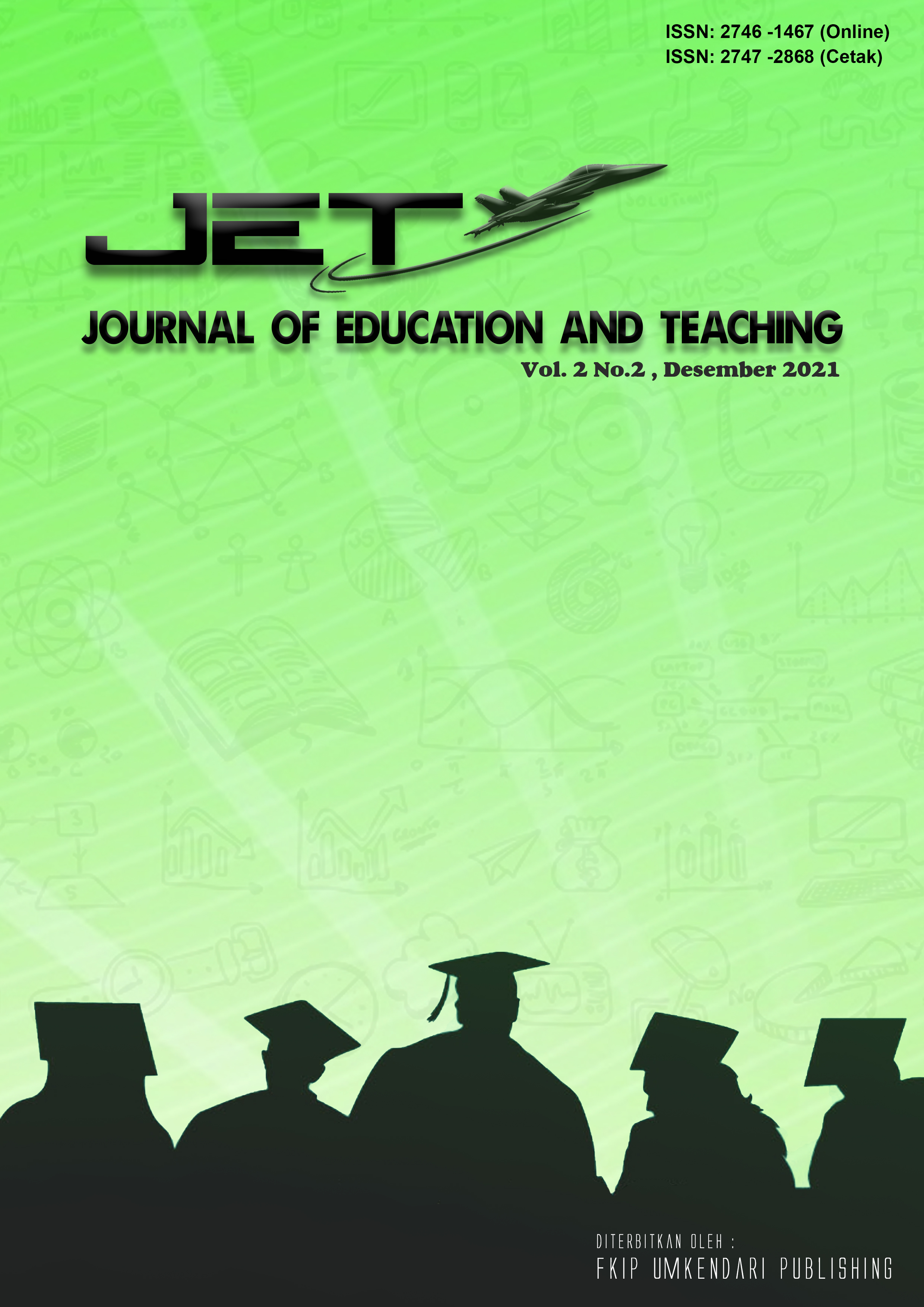Penerapan Loose Parts terhadap Kreativitas Anak Usia Dini selama Belajar dari Rumah
DOI:
https://doi.org/10.51454/jet.v2i2.114Keywords:
BDR, Creativity, Loose PartsAbstract
During the current pandemic, face-to-face learning is abolished based on BDR (Learning From Home) activities. Children will be interested in BDR activities if they are packaged in the form of activities that explore children's creative abilities. Loose Parts-based learning is one of the media that can influence children's creativity programs, and later children will be able to think critically, analytically, creatively, and innovatively. The purpose of this study was to determine the application of Loose Parts to children's creativity during BDR. The research method used is descriptive qualitative method with the respondents being TK B students at TK Pertiwi 12.08 Papasan-Bangsri Jepara which collected 20 children. The results of the study concluded that children were interested in playing with various objects contained in the Loose Parts media. They are able to be creative with Loose Parts media that has been provided by parents, and children are also able to develop creativity from the results of the playing process using Loose Parts during BDR.
Downloads
References
Arikunto, S. (2006). Metedologi Penelitian. Bina Aksara: Jakarta.
Bambang, R. (2010). Dasar-Dasar Pembelanjaan Perusahaan (4th ed.). BPFE.
Damayanti A., Sriyanti Rahmatunnisa & Lia Rahmawati. (2020). Peningkatan Kreativitas Berkarya Anak Usia 5-6 Tahun Melalui Pembelajaran Jarak Jauh Berbasis Steam Dengan Media Loose Parts. Jurnal Buah Hati, 7(2), 74–90. https://ejournal.bbg.ac.id/buahhati/article/view/1124.
Furi, A. Z., Harmawati, Denok, M., & B.A. (2019). Meningkatkan Kemampuan Kognitif melalui Penerapan Metode Eksperimen Menggunakan Media Loose Parts pada Anak Kelompok B. Http://E-Journal.Ivet.Ac.Id/Index.Php/Emp/Index, 1(2), 7–19. http://e-journal.ivet.ac.id/index.php/emp.
Nurjanah, N. E. (2020). Jurnal audi. Jurnal Ilmiah Kajian Ilmu Anak Dan Media Informasi PUD, 1(1), 19–31. https://scholar.google.com/scholar?hl=id&as_sdt=0%2C5&q=jurnal+tentang+STEAM+dan+loose+parts&oq=#d=gs_qabs&u=%23p%3DMDThokOifyEJ.
Prameswari, T., & Anik Lestariningrum. (2020). Strategi Pembelajaran Berbasis STEAM Dengan Bermain Loose Parts Untuk Pencapaian Keterampilan 4c Pada Anak Usia 4-5 Tahun. Efektor, 7(1), 24–34. https://repository.unpkediri.ac.id/id/eprint/3019.
Siantajani, Y. (2020). Loose Parts. PT Sarang Seratus Aksara.
Sugiyono. (2014). Metode Penelitian Kuantitatif, Kualitatif, dan R&D. CV. Alfabeta: Bandung.
Wahyuningsih, S., Pudyaningtyas, A. R., Hafidah, R., Syamsuddin, M. M., Nurjanah, N. E., & Rasmani, U. E. E. (2019). Efek Metode STEAM pada Kreatifitas Anak Usia 5-6 Tahun. Jurnal Obsesi : Jurnal Pendidikan Anak Usia Dini.
Zabidin, D., Rahmiatin, T. ., & Nasrullah, R. . (2021). The Implementation of Using Whatsapp and Youtube in FLTM Class: Teacher’s Perception. Journal of Education and Teaching (JET), 2(1), 10-15. https://doi.org/10.51454/jet.v2i1.28
Downloads
Published
How to Cite
Issue
Section
License
Copyright (c) 2021 Siti Rohmatun, Erika Setiyani, Fulka Rohfirsta, Dewi Fitamaya, Rohmatun Nisa, Muhammad Nofan Zulfahmi

This work is licensed under a Creative Commons Attribution-ShareAlike 4.0 International License.




